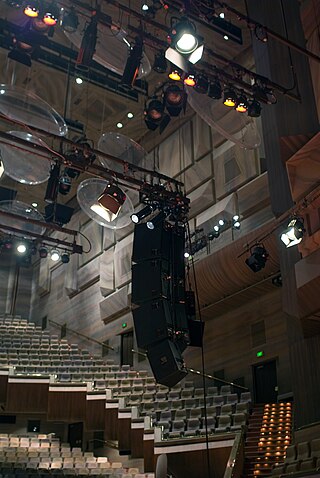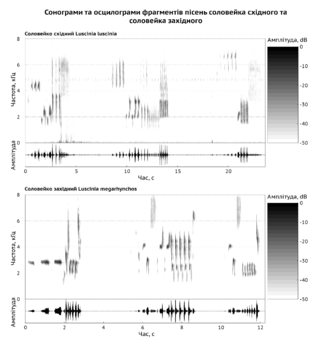Acoustics organizations
| | This section is empty. You can help by adding to it. (December 2017) |
The following outline is provided as an overview of and topical guide to acoustics:
Acoustics – interdisciplinary science that deals with the study of all mechanical waves in gases, liquids, and solids including topics such as vibration, sound, ultrasound and infrasound. A scientist who works in the field of acoustics is an acoustician while someone working in the field of acoustics technology may be called an acoustical engineer. The application of acoustics is present in almost all aspects of modern society with the most obvious being the audio and noise control industries.
| | This section is empty. You can help by adding to it. (December 2017) |
Christian Andrews Doppler
James Lighthill

Acoustics is a branch of physics that deals with the study of mechanical waves in gases, liquids, and solids including topics such as vibration, sound, ultrasound and infrasound. A scientist who works in the field of acoustics is an acoustician while someone working in the field of acoustics technology may be called an acoustical engineer. The application of acoustics is present in almost all aspects of modern society with the most obvious being the audio and noise control industries.
Reverberation, in acoustics, is a persistence of sound after it is produced. Reverberation is created when a sound or signal is reflected. This causes numerous reflections to build up and then decay as the sound is absorbed by the surfaces of objects in the space – which could include furniture, people, and air. This is most noticeable when the sound source stops but the reflections continue, their amplitude decreasing, until zero is reached.

Acoustical engineering is the branch of engineering dealing with sound and vibration. It includes the application of acoustics, the science of sound and vibration, in technology. Acoustical engineers are typically concerned with the design, analysis and control of sound.

Bioacoustics is a cross-disciplinary science that combines biology and acoustics. Usually it refers to the investigation of sound production, dispersion and reception in animals. This involves neurophysiological and anatomical basis of sound production and detection, and relation of acoustic signals to the medium they disperse through. The findings provide clues about the evolution of acoustic mechanisms, and from that, the evolution of animals that employ them.

The Acoustical Society of America (ASA) is an international scientific society founded in 1929 dedicated to generating, disseminating and promoting the knowledge of acoustics and its practical applications. The Society is primarily a voluntary organization of about 7500 members and attracts the interest, commitment, and service of many professionals.
Whitlow W. L. Au was a leading expert in bioacoustics specializing in biosonar of odontocetes. He is author of the widely known book The Sonar of Dolphins (1993) and, with Mardi Hastings, Principles of Marine Bioacoustics (2008). Au was honored as a Fellow of the Acoustical Society of America in 1990 and awarded the ASA's first Silver Medal in Animal Bioacoustics in 1998. He was graduate advisor to MacArthur Fellow Kelly Benoit-Bird, who credits Au for discovering how sophisticated dolphin sonar is, developing dolphin-inspired machine sonars to separate different species of fish with the goal of protecting sensitive species, and for making numerous contributions to the description of Humpback whale song, which helped protect these whales from ship noise and ship traffic.
Sound from ultrasound is the name given here to the generation of audible sound from modulated ultrasound without using an active receiver. This happens when the modulated ultrasound passes through a nonlinear medium which acts, intentionally or unintentionally, as a demodulator.

John "Shôn" Eirwyn Ffowcs Williams (1935–2020) was Emeritus Rank Professor of Engineering at the University of Cambridge and a former Master of Emmanuel College, Cambridge (1996–2002). He may be best known for his contributions to aeroacoustics, in particular for his work on Concorde. Together with one of his students, David Hawkings, he introduced the far-field integration method in computational aeroacoustics based on Lighthill's acoustic analogy, known as the Ffowcs Williams–Hawkings analogy.
A parametric array, in the field of acoustics, is a nonlinear transduction mechanism that generates narrow, nearly side lobe-free beams of low frequency sound, through the mixing and interaction of high frequency sound waves, effectively overcoming the diffraction limit associated with linear acoustics. The main side lobe-free beam of low frequency sound is created as a result of nonlinear mixing of two high frequency sound beams at their difference frequency. Parametric arrays can be formed in water, air, and earth materials/rock.

Underwater acoustics is the study of the propagation of sound in water and the interaction of the mechanical waves that constitute sound with the water, its contents and its boundaries. The water may be in the ocean, a lake, a river or a tank. Typical frequencies associated with underwater acoustics are between 10 Hz and 1 MHz. The propagation of sound in the ocean at frequencies lower than 10 Hz is usually not possible without penetrating deep into the seabed, whereas frequencies above 1 MHz are rarely used because they are absorbed very quickly.
The ASA Silver Medal is an award presented by the Acoustical Society of America to individuals, without age limitation, for contributions to the advancement of science, engineering, or human welfare through the application of acoustic principles or through research accomplishments in acoustics. The medal is awarded in a number of categories depending on the technical committee responsible for making the nomination.

In physics, sound is a vibration that propagates as an acoustic wave through a transmission medium such as a gas, liquid or solid. In human physiology and psychology, sound is the reception of such waves and their perception by the brain. Only acoustic waves that have frequencies lying between about 20 Hz and 20 kHz, the audio frequency range, elicit an auditory percept in humans. In air at atmospheric pressure, these represent sound waves with wavelengths of 17 meters (56 ft) to 1.7 centimeters (0.67 in). Sound waves above 20 kHz are known as ultrasound and are not audible to humans. Sound waves below 20 Hz are known as infrasound. Different animal species have varying hearing ranges.

An audio engineer helps to produce a recording or a live performance, balancing and adjusting sound sources using equalization, dynamics processing and audio effects, mixing, reproduction, and reinforcement of sound. Audio engineers work on the "technical aspect of recording—the placing of microphones, pre-amp knobs, the setting of levels. The physical recording of any project is done by an engineer... the nuts and bolts."
An autonomous recording unit (ARU) is a self-contained audio recording device that is deployed in marine or terrestrial environments for bioacoustical monitoring. The unit is used in both marine and terrestrial environments to track the behavior of animals and monitor their ecosystems. On a terrestrial level, the ARU can detect noises coming from bird habitats and determine relative emotions that each bird conveys along with the population of the birds and the relative vulnerability of the ecosystem. The ARU can also be used to understand noises made by marine life to see how the animals' communication affects the operation of their ecosystem. When underwater, the ARU can track the sound that human made machines make and see the effect those sounds have on marine life ecosystems. Up to 44 work days can be saved through the utilization of ARU's, along with their ability to discover more species.
Structural acoustics is the study of the mechanical waves in structures and how they interact with and radiate into adjacent media. The field of structural acoustics is often referred to as vibroacoustics in Europe and Asia. People that work in the field of structural acoustics are known as structural acousticians. The field of structural acoustics can be closely related to a number of other fields of acoustics including noise, transduction, underwater acoustics, and physical acoustics.
ANSI/ASA S1.1-2013, published by the American National Standards Institute (ANSI), is the current American National Standard on Acoustical Terminology. ANSI S1.1 was first published in 1960 and has its roots in a 1942 standard published by the American Standards Association, the predecessor of ANSI. It includes the following sections
The Pioneers of Underwater Acoustics Medal is awarded by the Acoustical Society of America in recognition of "an outstanding contribution to the science of underwater acoustics, as evidenced by publication of research results in professional journals or by other accomplishments in the field". The award was named in honor of H. J. W. Fay, Reginald Fessenden, Harvey Hayes, G. W. Pierce, and Paul Langevin.
ACTRAN is a finite element-based computer aided engineering software modeling the acoustic behavior of mechanical systems and parts. Actran is being developed by Free Field Technologies, a Belgian software company founded in 1998 by Jean-Pierre Coyette and Jean-Louis Migeot. Free Field Technologies is a wholly owned subsidiary of the MSC Software Corporation since 2011. Free Field Technologies and MSC Software are part of Hexagon AB since 2017.
Manohar Lal Munjal is an Indian acoustical engineer, honorary professor, and INSA senior scientist at the Facility for Research in Technical Acoustics (FRITA) of the Indian Institute of Science. He is known for his studies on aeroacoustics and finite wave analysis of exhaust systems. He is an elected fellow of all the three major Indian science academies viz. Indian Academy of Sciences, Indian National Science Academy, National Academy of Sciences, India as well as the Indian National Academy of Engineering. He has published three books viz. Noise and Vibration Control, Acoustics of Ducts and Mufflers With Application to Exhaust and Ventilation System Design, and IUTAM Symposium on Designing for Quietness and has contributed chapters to books edited by himself and others. The Council of Scientific and Industrial Research, the apex agency of the Government of India for scientific research, awarded him the Shanti Swarup Bhatnagar Prize for Science and Technology, one of the highest Indian science awards for his contributions to Engineering Sciences in 1986.
The Institute of Acoustics of the Chinese Academy of Sciences (CAS) was established in 1964 by the Chinese government in the context of China's national defense needs for acoustic research, under the auspices of Marshall Nie Rongzhen.